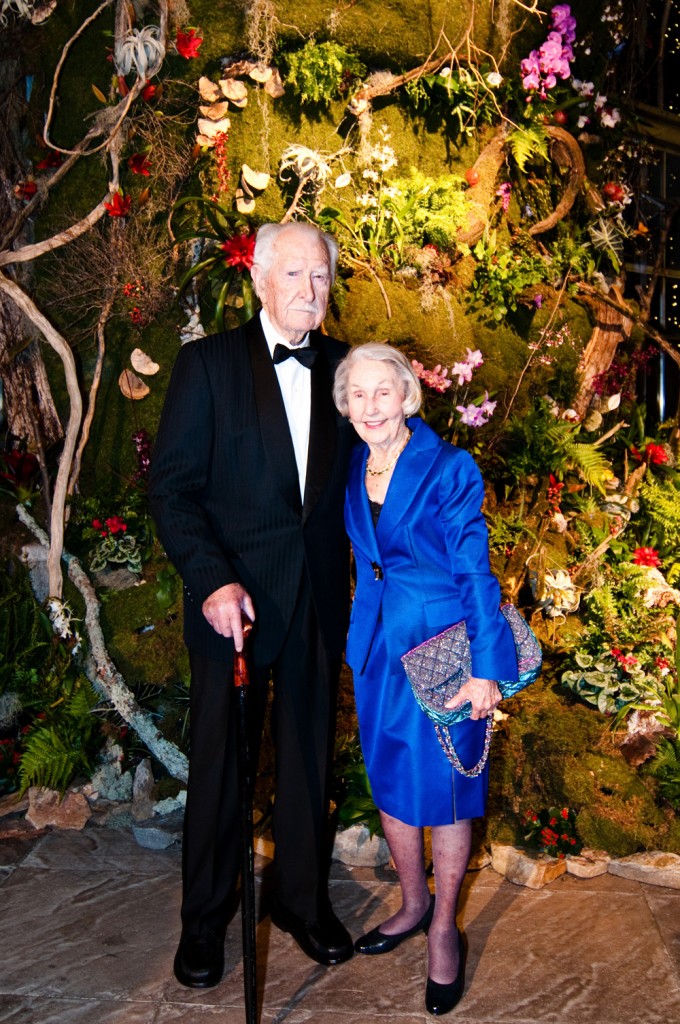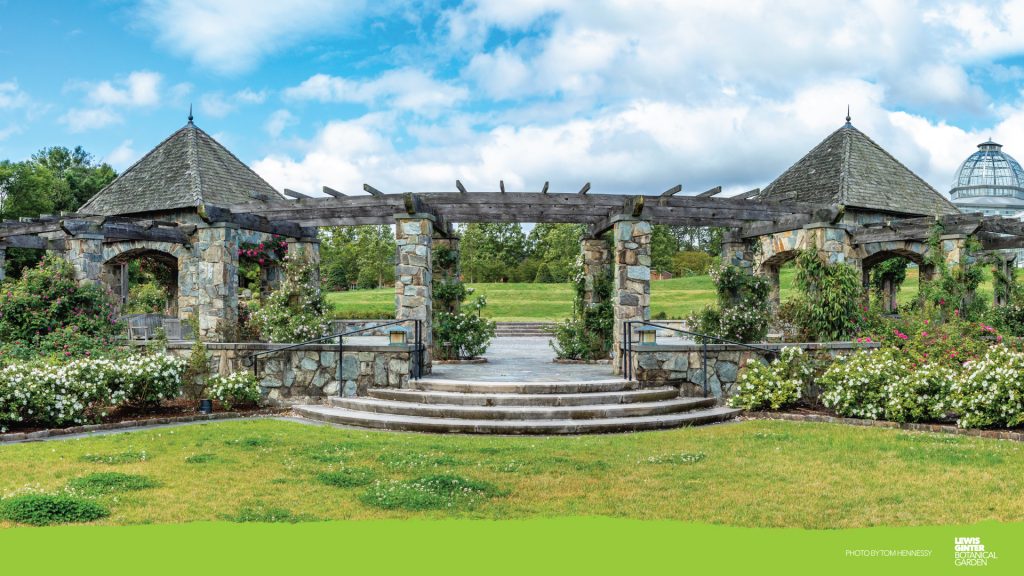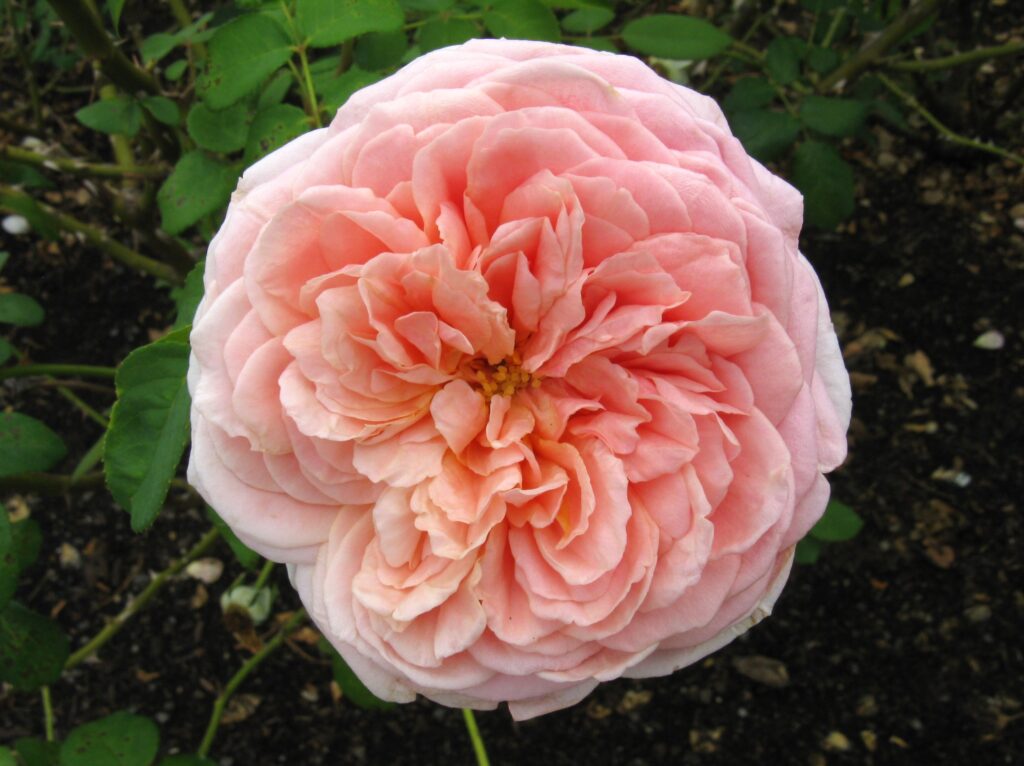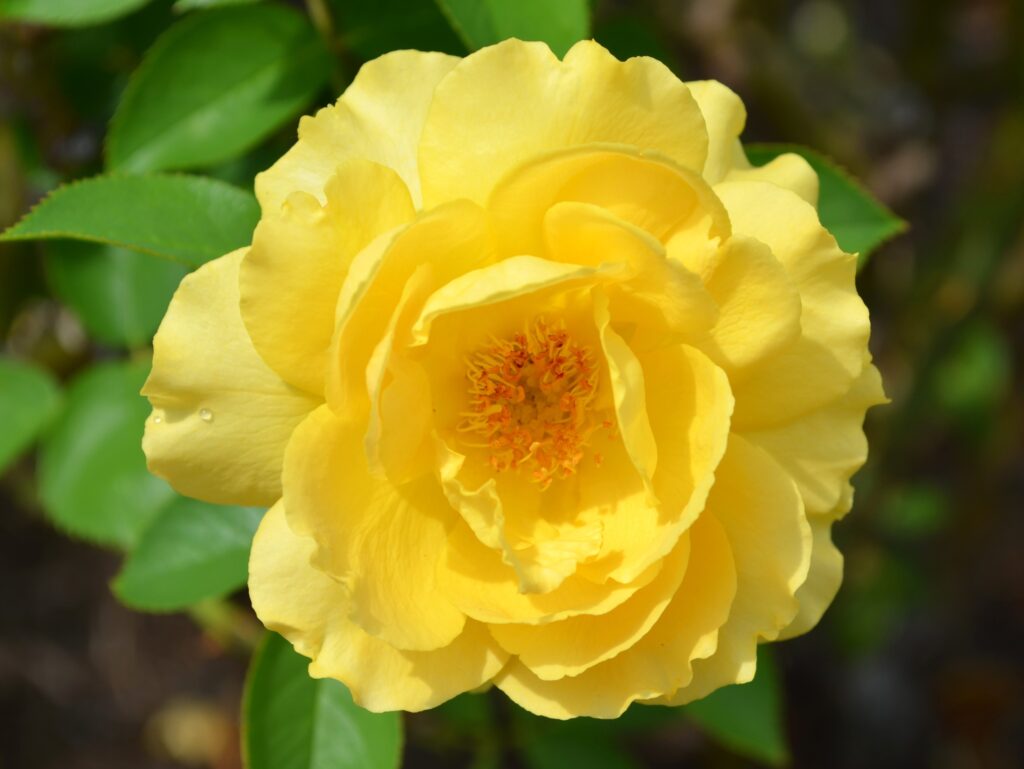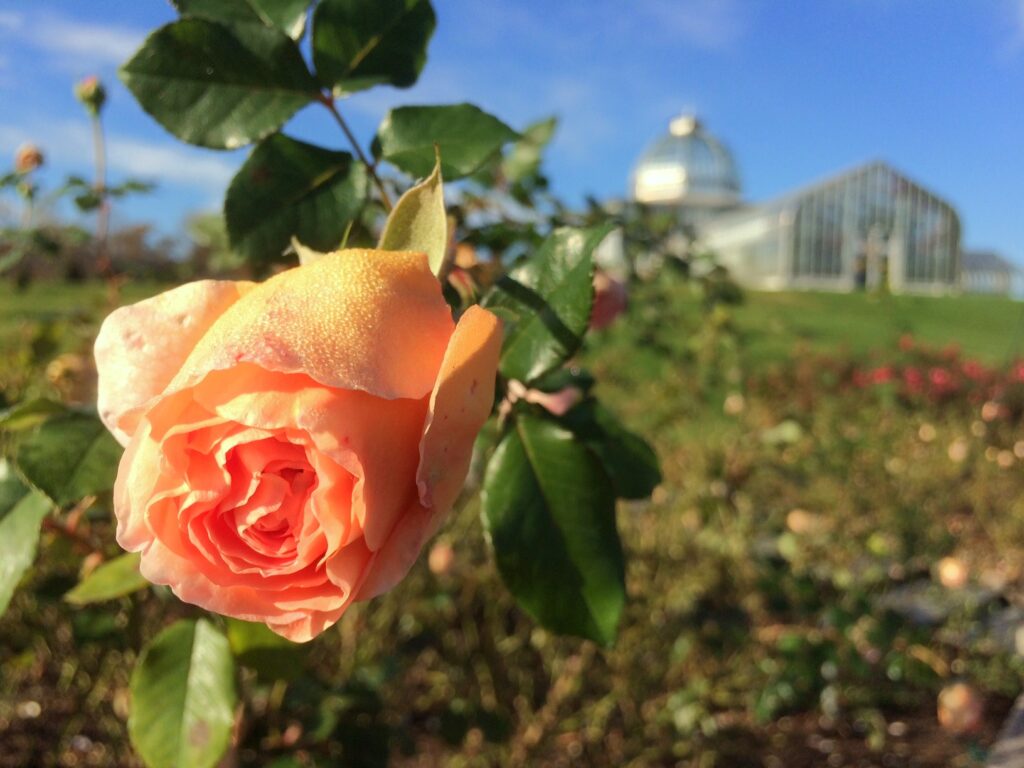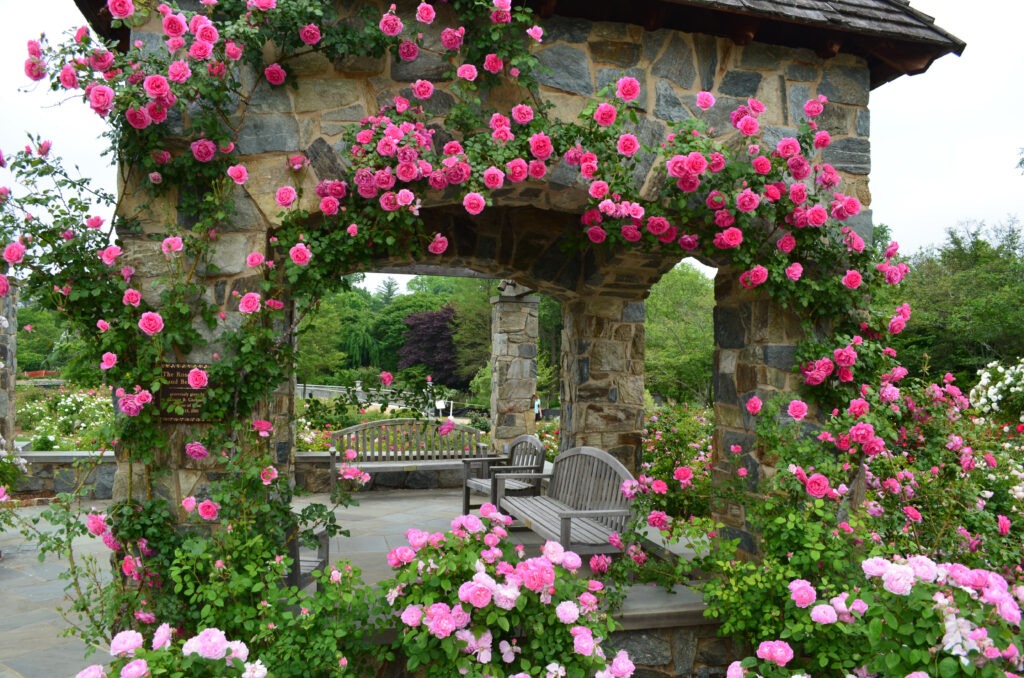How the Rose Garden Grew
Louise Cochrane loved roses. She grew roses in her home garden at Walnut Hill. She captured the essence of roses in many of her paintings. And for many years, she volunteered to help care for the roses at Lewis Ginter Botanical Garden.
Ultimately, it was Mrs. Cochrane’s generosity that became the fullest expression of her love for roses. In 2008, she made a gift to the Garden that would triple the footprint of the original rose garden, greatly expand the variety of roses that grew there and elevate it to national significance. In deep gratitude, we named the reinvigorated rose garden after her.
The original rose garden at Lewis Ginter Botanical Garden was designed in 2001 by architects Rodney Robinson and Allan Summers of the Wilmington, Delaware firm RRLA, Inc. A small garden with an Italianate belvedere, it had also been endowed by a gift from Mrs. Cochrane.
There were 1,800 rose shrubs planted in that earliest iteration. Concern about pesticide use limited the collection to old-fashioned roses which are generally not plagued by pests and disease. The balance of the space was filled with perennials and conifers.
But stress from Richmond’s heat and humidity proved intolerable to many of the original specimens. In an effort to improve air circulation, the collection was culled to 1,500 shrubs to take advantage of the fresh air that flowed uphill from Sydnor Lake. More disease-resistant hybrid roses were planted along with other specimens selected for their scent and ability to rebloom.
In 2008, thanks to Mrs. Cochrane’s transformational gift, architect Craig Reischauer of the Richmond firm Higgins and Gerstenmaier, PLC designed what would become the Louise Cochrane Rose Garden. At the base of the Conservatory lawn, in the heart of the Garden, he created a 12,000 sq. ft. oasis featuring wooden arbors and stone arches. It would double as a venue for special events and live performances. Visitors, who found themselves summoned by the splendor and scent of the roses, would walk through 9,000 ft. of curved stone pathways to explore 16 beds filled with dozens of varieties of roses sourced from all over the world. Reischauer incorporated a 24-ft. diameter labyrinth in the center of the stone terrace to invite contemplation, meditation and spiritual exploration in the company of roses.
Reischauer chose plants for the garden to showcase the spectrum of color characteristic of the rose family. He planted a palette that grew in intensity from pink to red to purple on the southwest side of the garden, and another from yellow to apricot and orange on the northwest side. In the center of the rose garden, he imagined a modulating scheme of white and cream blossoms to serve as a neutral background for activities on the terrace.
Underground, a drip irrigation system funneled moisture to the rose’s root systems and away from leaves where it might encourage disease. An underdrain system was devised to capture runoff and channel it to a reconstructed wetland where biological processes would filter out residual nutrients or pesticides naturally, preventing potential contamination of the lake water from chemicals applied in the rose garden.
Roses bloom from early May until early November in the Louise Cochrane Rose Garden – they are the longest-blooming plants in the Garden’s collection. Mrs. Cochrane’s favorite, a British cultivar called Rosa ‘Auscot’ Abraham Darby®, bred by David Austin®, is an English shrub rose with a rich, sharp, fruity fragrance. It bears large, cup-shaped flowers in shades of apricot and yellow that fade to coral-pink as they age.
Climbing along a wooden pergola in the Louise Cochrane Rose Garden is the first rose patented in the United States – a prolific bloomer named Rosa ‘New Dawn’. Its clusters of sweetly fragrant, medium-sized, soft pink flowers deepen in color towards the center, in sharp contrast to its plentiful, glossy foliage.
‘Julia Child‘ is a golden yellow rose chosen by cooking icon Julia Child to bear her name. She loved it for its buttery-yellow color and licorice-scented blossoms that rebloom in big, free-flowing clusters all season long.
Like all David Austin roses, Rosa ‘Aussaucer’ Evelyn® was bred for its fragrance – it has a sumptuous scent reminiscent of fresh peaches and apricots. Its blooms are particularly large with as many as 100 apricot-colored petals artfully arranged around a darker center.
What Rosa ‘Meipeporia’ Oso Easy Double Red® lacks in fragrance it makes up for with lush deep red blossoms held well above the foliage on long slender stems. A somewhat larger shrub, it blooms all summer long without deadheading.
In early 2024, Rose Garden Horticulturist Avery Crain decreased the number of roses in the Louise Cochrane Rose Garden to 869, replacing the culled specimens with a variety of companion plants that will work to protect the prized shrubs against pests and disease.
Today, the rose garden collection boasts the greatest variety of European hybrids in the southeastern United States. Bred and selected for disease resistance, vigor, re-bloom and fragrance, they are part of a plan to sustain the garden and protect Louise Cochrane’s living legacy.
Thanks to Laurel Hill, Living Collections and GIS Manager, and Avery Crain, Rose Garden Horticulturist at Lewis Ginter Botanical Garden, for their contributions to this story.
